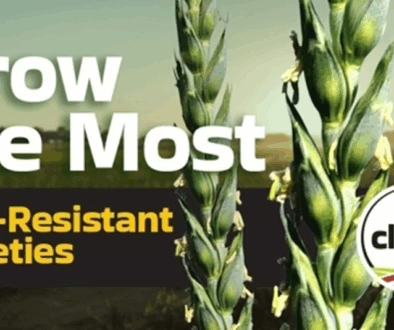Strategies for Managing Herbicide Shortages
This article is adapted from the production resource ‘Strategies for Managing Herbicide Shortages’ – a collaboration of the Saskatchewan Wheat Development Commission, Saskatchewan Barley Development Commission, Manitoba Crop Alliance, and Alberta Grains (formerly the Alberta Wheat and Alberta Barley commissions). Download the full .PDF below.
If you’re a grower in the Prairies, you’ve likely felt the pinch of the herbicide shortage. Supply chain snarls, increased global demand, and production delays have left many shelves emptier than a dry spring rain barrel. But don’t panic—there are practical, proactive strategies to stay ahead of the sprayer.
What Causes a Herbicide Shortage?
Global disruptions, particularly in manufacturing hubs, have led to limited availability of key herbicides like glyphosate and glufosinate. Compounding the issue, increased demand and tight inventory turnover mean retailers aren’t stocking as much, and what’s available is often subject to price hikes or delivery delays.
What Can You Do About It?
Here’s how to keep your weed management plans resilient:
1. Plan Early and Diversify
Early planning is your new best friend. Work closely with your agronomist to develop Plan A… and B… and maybe even C. Consider herbicide alternatives that may not be your first choice but are still effective with proper timing.
2. Revisit Crop Rotation
Some herbicide groups are more affected than others. By rotating crops strategically, you can use alternative herbicide groups and ease the pressure on high-demand products.
3. Use Tank Mixes and Sequential Applications
Layering different modes of action (MOAs) through tank mixes or sequential treatments can help reduce dependency on any one product and improve weed control.
4. Don’t Skip the Scouting
In-season weed scouting is essential. Knowing what you’re up against allows you to target problem weeds with more precision—and fewer surprises.
5. Communicate With Retailers and Suppliers
Maintain open lines of communication with your suppliers. Let them know your needs early so they can advocate on your behalf and allocate inventory fairly.
Looking Ahead: Resilience Is Key
A herbicide shortage isn’t just a temporary hiccup; it’s a wake-up call to build more adaptable and sustainable weed management systems. By staying informed, being flexible, and embracing integrated strategies, you’ll be better equipped to face whatever next season throws your way—kochia and all.




